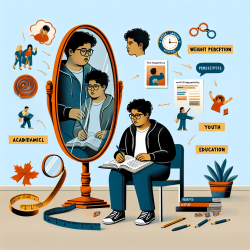Introduction
Alopecia Areata (AA) is an autoimmune condition characterized by hair loss, affecting individuals across various demographics. While the physical manifestations of AA are well-documented, the financial implications remain underexplored. A recent study titled "Out-of-Pocket Costs in Alopecia Areata: A Cross-Sectional Study in German-speaking Countries" sheds light on the economic burden faced by individuals with AA in Germany, Austria, and Switzerland. This blog aims to highlight the key findings of the study and encourage practitioners to consider these financial aspects in their practice.
Key Findings from the Study
The study involved 346 participants, predominantly women, with a mean age of 38.5 years. It revealed that individuals with AA incur an average annual out-of-pocket cost of 1,248€, primarily spent on hair replacement products, cosmetics, and medical consultations. These expenses are not typically covered by health insurance, exacerbating the financial burden on affected individuals.
Factors Influencing Costs
- Severity and Duration of Illness: The study found that out-of-pocket costs were significantly influenced by the severity and duration of AA. Individuals with more severe forms of AA (grade III and IV) tend to incur higher costs.
- Gender Differences: Women reported higher expenses compared to men, which may be attributed to societal pressures and the stigma associated with hair loss.
- Treatment Providers: Participants treated by naturopaths reported the highest out-of-pocket expenses, followed by those treated by general practitioners and dermatologists.
Implications for Practitioners
Understanding the financial burden of AA is crucial for practitioners who aim to provide comprehensive care. Here are some recommendations based on the study's findings:
- Consider Financial Counseling: Practitioners should consider incorporating financial counseling into their treatment plans to help patients manage their out-of-pocket expenses effectively.
- Advocate for Insurance Coverage: Advocacy for broader insurance coverage for AA-related treatments and supportive coping methods is essential to alleviate the financial burden on patients.
- Encourage Holistic Approaches: While traditional treatments remain important, practitioners should also consider recommending holistic approaches that may offer cost-effective alternatives for managing AA.
Encouraging Further Research
While this study provides valuable insights into the economic impact of AA, further research is needed to explore these aspects in different regions and populations. Practitioners are encouraged to participate in or support studies that aim to understand the broader implications of AA on patients' lives.
Conclusion
The financial burden of AA is a significant concern that adds to the psychosocial challenges faced by affected individuals. By understanding and addressing these economic aspects, practitioners can enhance the quality of care provided to patients with AA. For those interested in delving deeper into the study, you can access the original research paper Out-of-Pocket Costs in Alopecia Areata: A Cross-Sectional Study in German-speaking Countries.










